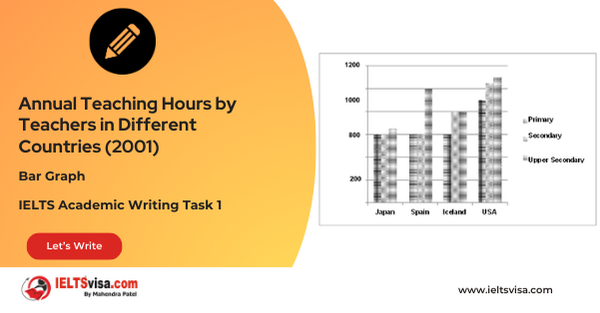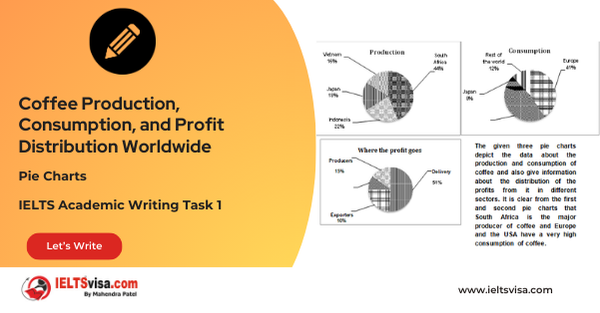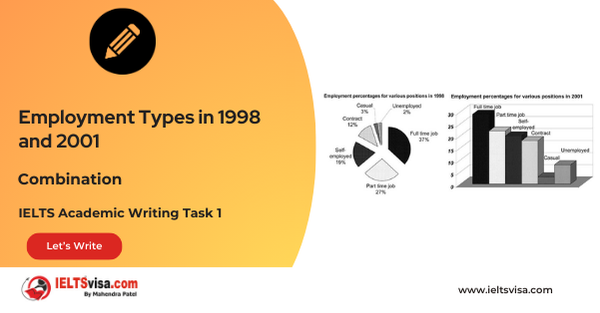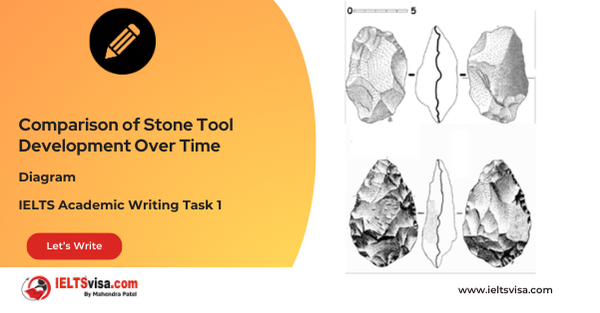Percentage of Immigrants to Australia from Five Countries in 1962, 1982, and 2002
IELTS Academic Writing Task 1 - Bar Graph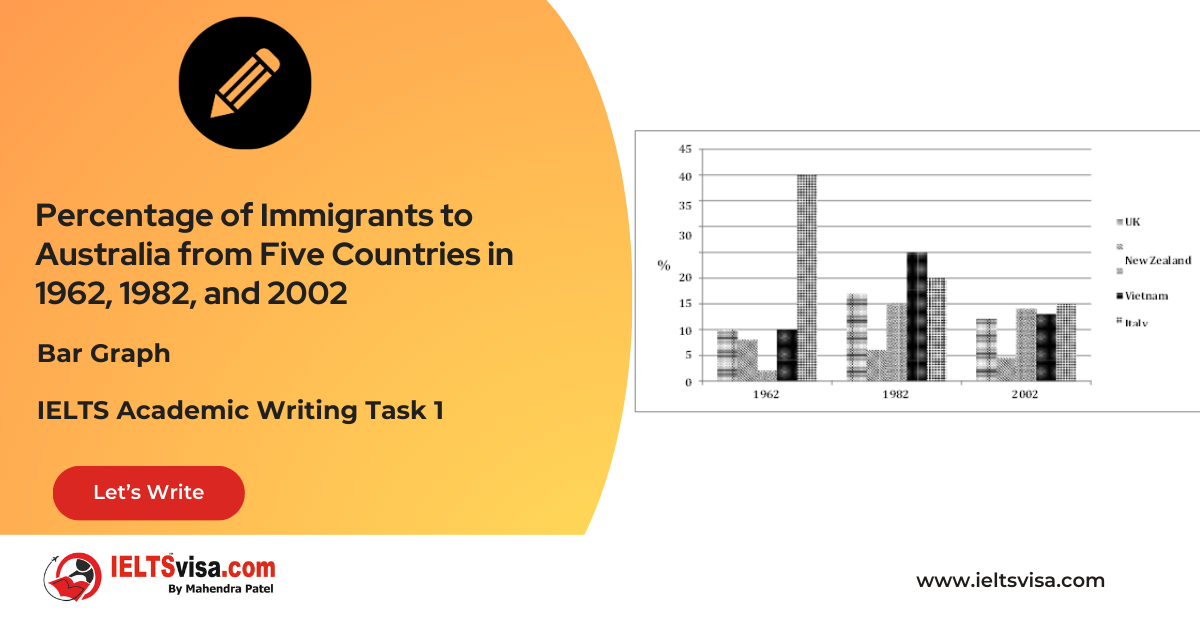
IELTS Writing Task 1 Question
The graph below shows the percentage of immigrants to Australia from five countries in 1962, 1982 and 2002.
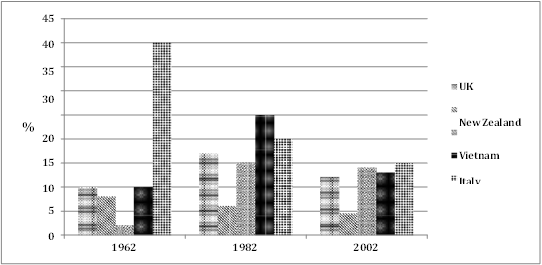
Common questions for the charts
1. Graph Type: Column graph
2. Title: Percentage of Immigrants to Australia from Five Countries in 1962, 1982, and 2002
3. What are the units of measurement?: Percentage of immigrants
4. Who: Immigrants to Australia from Italy, New Zealand, India, the UK, and Vietnam
5. When: 1962, 1982, and 2002
6. Where: Australia
7. Topic: Immigration trends from different countries to Australia over time
Process Showing and Trends
Comparison 1 : Immigration Trends of Italians and New Zealanders (1962–2002)
- Details:
1. The percentage of Italian immigrants to Australia decreased from 40% in 1962 to 15% in 2002.
2. Similarly, the percentage of New Zealand immigrants showed a decline, from 8% in 1962 to about 4.5% by 2002.
Comparison 2 : Immigration Trends of Indians, British, and Vietnamese (1962–2002)
- Details:
1. The proportion of Indian immigrants rose significantly from 2% in 1962 to 14% in 2002, after peaking at 15% in 1982.
2. The percentage of British immigrants peaked at 17% in 1982, then dropped to 12% by 2002.
3. The Vietnamese population in Australia increased significantly from 10% in 1962 to 25% in 1982 before slightly declining to 13% by 2002.
Sample Answer
The column graph presents the percentage of immigrants to Australia from five countries in 1962, 1982, and 2002.
Overall, the most dramatic changes in immigration patterns were seen among Italian and Indian immigrants.
Italians and New Zealanders saw a decline in their share of Australian immigrants over the period. In 1962, 40% of immigrants were from Italy, but this dropped significantly to 15% by 2002. Similarly, New Zealanders represented 8% of immigrants in 1962, but this fell to around 4.5% by 2002.
Conversely, the number of immigrants from India, the UK, and Vietnam fluctuated more. Indians represented just 2% of immigrants in 1962, but their share increased substantially to 15% by 1982 before dropping slightly to 14% in 2002. The proportion of British immigrants peaked at 17% in 1982, then fell to 12% by 2002. Vietnamese immigrants saw the most significant increase, rising from 10% in 1962 to 25% in 1982, before declining to 13% by 2002.
Top 26 Vocabularies
| Vocabulary | Meaning | Synonyms | Examples | Type |
|
Proportion |
The percentage or share of something |
Percentage, fraction |
“The proportion of Italian immigrants fell significantly.” |
Noun |
|
Escalate |
To increase or grow rapidly |
Increase, rise |
“The number of Vietnamese immigrants escalated from 10% in 1962 to 25% in 1982.” |
Verb |
|
Dramatic |
Significant or striking in effect |
Remarkable, considerable |
“The Italians and New Zealanders showed a dramatic decline in immigration.” |
Adjective |
|
Fluctuate |
To change irregularly |
Vary, shift |
“The percentage of British immigrants fluctuated during the period.” |
Verb |
|
Decline |
To decrease or become smaller |
Diminish, drop |
“The percentage of immigrants from Italy declined over the years.” |
Verb |
|
Immigrants |
People who come to live permanently in a foreign country |
Migrants, newcomers |
“The graph shows the percentage of immigrants to Australia.” |
Noun |
|
Dramatic |
Remarkable, striking in effect |
Significant, notable |
“The dramatic decline in Italian immigrants is evident.” |
Adjective |
|
Decline |
A gradual decrease or reduction |
Drop, fall |
“The decline in New Zealand immigrants was consistent.” |
Noun/Verb |
|
Fluctuate |
To change frequently in an irregular way |
Vary, shift |
“The percentage of British immigrants fluctuated during the years.” |
Verb |
|
Substantially |
To a large or significant degree |
Considerably, significantly |
“The percentage of Indian immigrants increased substantially.” |
Adverb |
|
Proportion |
A part or share of the whole |
Share, percentage |
“The proportion of Italian immigrants dropped significantly.” |
Noun |
|
Escalate |
To increase rapidly or intensify |
Surge, rise |
“The number of Vietnamese immigrants escalated in the 1980s.” |
Verb |
|
Peak |
The highest point or level |
Climax, zenith |
“The proportion of British immigrants peaked in 1982.” |
Verb/Noun |
|
Significant |
Important or substantial |
Major, considerable |
“The shift in immigration patterns was significant.” |
Adjective |
|
Immigration |
The act of coming to live permanently in a country |
Relocation, resettlement |
“The chart tracks immigration from different countries.” |
Noun |
|
Decrease |
A reduction or decline in amount |
Reduction, drop |
“The number of New Zealand immigrants decreased by 2002.” |
Noun/Verb |
|
Increase |
To grow or become larger |
Rise, expansion |
“The number of Indian immigrants increased over the years.” |
Noun/Verb |
|
Steady |
Remaining consistent or unchanged |
Stable, constant |
“The decline in immigrants was steady over time.” |
Adjective |
|
Represent |
To stand for or symbolize |
Symbolize, account for |
“The immigrants from Italy represented 40% in 1962.” |
Verb |
|
Proportional |
Relating to or based on proportion |
Relative, corresponding |
“The change in immigration was proportional across countries.” |
Adjective |
|
Shift |
A change in position, direction, or tendency |
Change, move |
“There was a shift in the number of immigrants from India.” |
Noun/Verb |
|
Notable |
Worth noticing or important |
Remarkable, significant |
“The most notable change occurred with Italian immigrants.” |
Adjective |
|
Slump |
A sudden decrease or decline |
Drop, fall |
“The number of New Zealand immigrants saw a slump after 1982.” |
Noun |
|
Rise |
To increase in level or amount |
Growth, surge |
“Vietnamese immigration saw a rise in the 1980s.” |
Noun/Verb |
|
Trend |
A general direction or pattern |
Direction, movement |
“The trend shows more immigrants from India in recent years.” |
Noun |
|
Slight |
Small or minor in degree |
Minor, small |
“The change in the proportion of UK immigrants was slight.” |
Adjective |

Our Books
Master IELTS Speaking Part 1
IELTS Writing Task 1 Book
IELTS Writing Task 2 Book
Practice IELTS Other Modules
IELTS Listening
The IELTS Listening test assesses how well you can understand spoken English in various contexts. It lasts about 30 minutes and is divided into four sections with a total of 40 questions. The listening tasks become increasingly difficult as the test progresses.
IELTS Academic Reading
The IELTS Academic Reading section assesses your ability to understand and interpret a variety of texts in academic settings. It is designed to evaluate a range of reading skills, including skimming for gist, reading for main ideas, reading for detail, understanding inferences, and recognizing a writer's opinions and arguments.
IELTS Speaking
The IELTS Speaking test assesses your ability to communicate in English on everyday topics. It lasts 11-14 minutes and consists of three parts: introduction, cue card, and a discussion based on the cue card topic.
IELTS General Reading
IELTS General Reading tests your ability to understand and interpret various types of texts. Here are some key areas and types of content you can expect to encounter in the reading section, along with tips for effective preparation.
IELTS Academic Writing Task 1
In IELTS Academic Writing Task 1, you are presented with a visual representation of information, such as graphs, charts, tables, or diagrams, and you are required to summarize, compare, or explain the data in your own words.
IELTS General Writing Task 1
In IELTS General Writing Task 1, you are required to write a letter based on a given situation. The letter can be formal, semi-formal, or informal, depending on the prompt. Here’s a breakdown of the key components to include in your letter
IELTS Academic Writing Task 2
In IELTS Academic Writing Task 2, you are required to write an essay in response to a question or topic. Here’s a guide to help you understand the essential elements of this task
IELTS Exam Tips
To succeed in the IELTS exam, practice regularly, familiarize yourself with the test format, improve your vocabulary, develop time management skills, and take mock tests to build confidence.
Grammer for IELTS
Grammar is the foundation of effective communication in English. Understanding tense usage, subject-verb agreement, and sentence structure enhances clarity and coherence in writing and speaking.
Vocabulary for IELTS
Vocabulary plays a crucial role in the IELTS (International English Language Testing System) exam, especially in the Speaking and Writing sections. Here’s an overview of why vocabulary is important and how it impacts your performance
RECENT IELTS SAMPLES QUESTIONS AND ANSWERS
Task 1 – Column graph – Percentage of Young People Enrolled in Universities in 2000 and 2007.
20:00 Start Pause Stop [df_adh_heading title_infix="IELTS Writing Task 1 Question" use_divider="on"...
Task 1 – Bar Graph – Annual Teaching Hours by Teachers in Different Countries (2001)
20:00 Start Pause Stop [df_adh_heading title_infix="IELTS Writing Task 1 Question" use_divider="on"...
Task 1 – Pie Charts – Coffee Production, Consumption, and Profit Distribution Worldwide
20:00 Start Pause Stop [df_adh_heading title_infix="IELTS Writing Task 1 Question" use_divider="on"...
Task 1 – Column graph – Types of Transport Used by Tourists Visiting New Zealand from Five Countries in 2004.
20:00 Start Pause Stop [df_adh_heading title_infix="IELTS Writing Task 1 Question" use_divider="on"...
Task 1 – Bar and Pie Chart Combination – Employment Types in 1998 and 2001
20:00 Start Pause Stop [df_adh_heading title_infix="IELTS Writing Task 1 Question" use_divider="on"...
Task 1 – Diagram – Comparison of Stone Tool Development Over Time
20:00 Start Pause Stop [df_adh_heading title_infix="IELTS Writing Task 1 Question" use_divider="on"...


